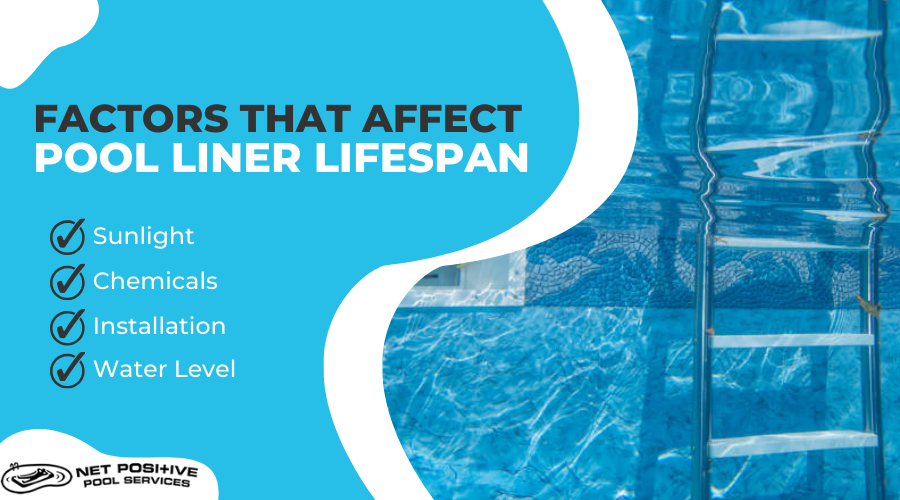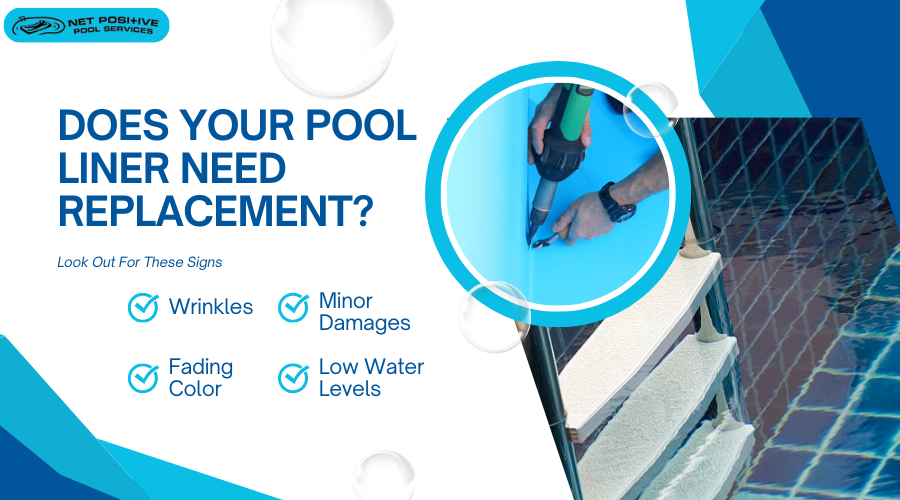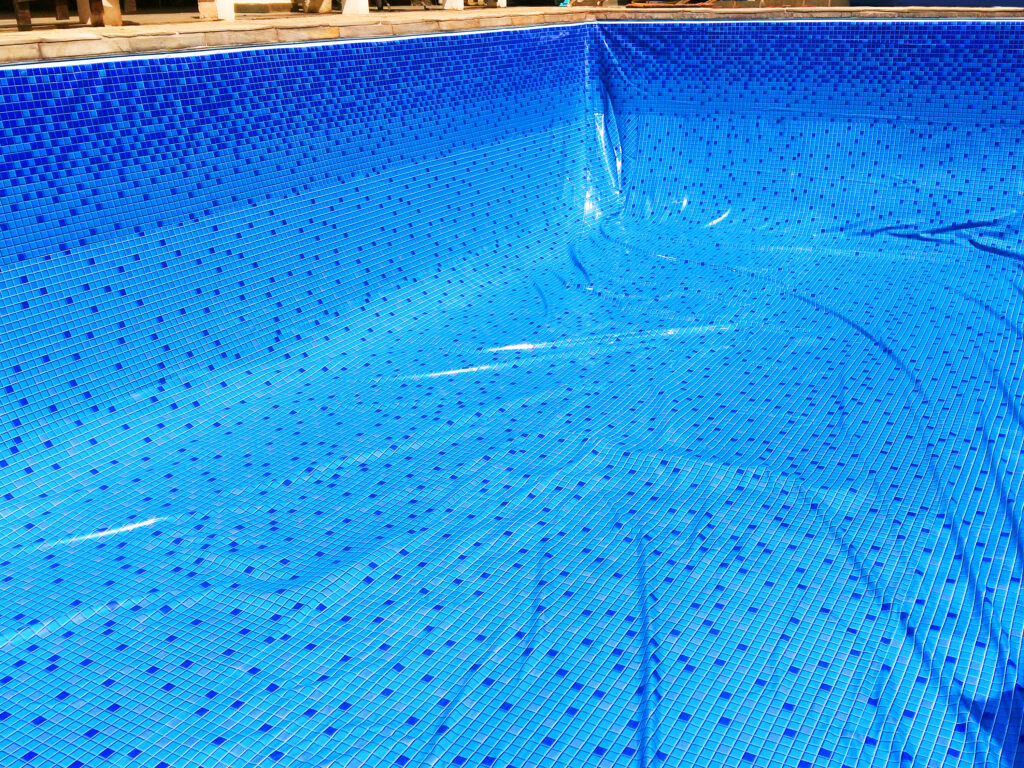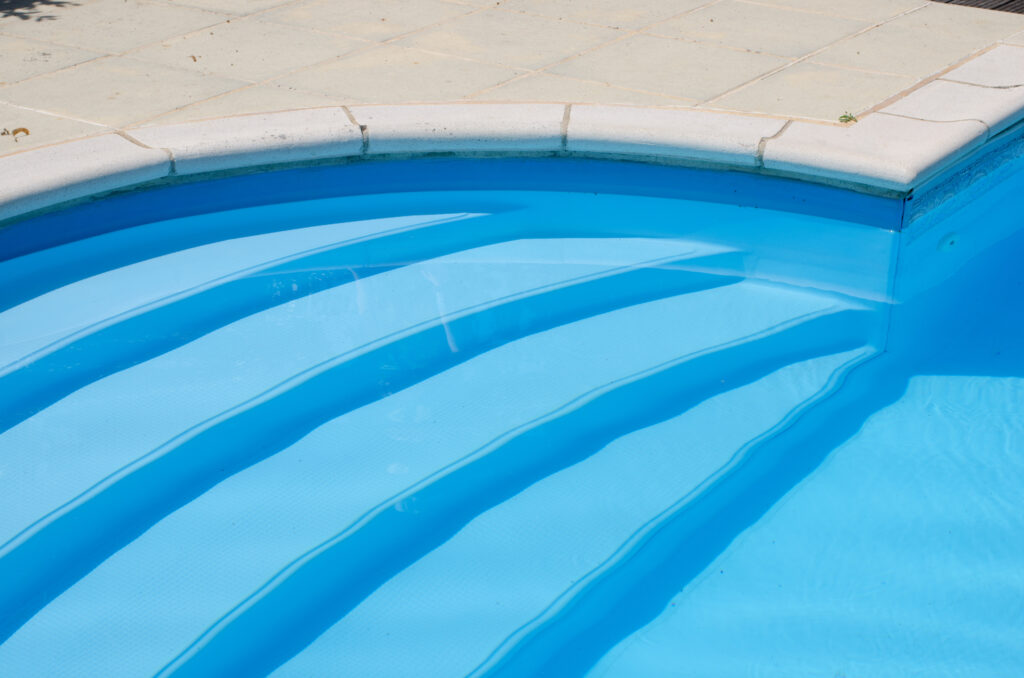Table of Contents
Nothing beats cooling off in your own swimming pool when it’s in optimal condition. But have you ever paused to consider what makes your pool reliable and safe? If you think about it, you might realize that it’s the unsung hero – your pool liner. So the critical question pops up – how long does a pool liner last? A standard pool liner typically has a lifespan of about 6-12 years. However, this can vary extensively, influenced by factors. The crucial role a liner plays in maintaining the safety and functionality of your pool can’t be overstressed. From mitigating leaks to adding an aesthetic touch, a well-maintained pool liner is fundamental to your pool’s ecosystem. So keeping a watchful eye on your liner’s condition and promptly addressing any damage can go a long way in extending its lifespan and your pool enjoyment.





Factors that Affect the Lifespan of a Pool Liner
Once you establish that your pool liner is the silent workhorse behind your pool’s safe and smooth operation, it’s essential to understand the factors affecting its lifespan. Several elements dictate how long a pool liner, especially a vinyl pool liner, will last. These factors can range from external environmental conditions to the care you provide your pool.Sunlight
One of the most notorious culprits behind diminishing a liner’s lifespan is constant exposure to direct sunlight and harmful UV rays. UV damage not only causes your pool wall to lose its vibrant color but also accelerates the deterioration of the liner material over time. If your pool is placed in a spot with constant sun exposure, it’s crucial to note that your liner may not last as long as it would in a shaded environment.Chemicals
Pool chemicals are different critical factors to consider. Maintaining proper water chemistry is mandatory to ensure your pool liner’s longevity. An imbalance in chlorine levels can speed up the wear and tear on your pool liner. Over chlorination as well as under chlorination can damage both your pool water and liner. Similarly, overlooking pH levels and calcium hardness could also reduce a liner’s lifespan exponentially.Improper Installation
Improper installation of liners is a common mistake that can lead to wrinkles or tears, significantly cutting short the liner’s life. This issue is most frequently seen with vinyl liner pools and can be avoided by entrusting the installation to a professional.Water Level
The water level in your pool can indirectly impact the liner’s lifespan. Preferably, the water level should be halfway up your skimmer opening. A water level that’s too high or too low can lead to undue stress on the liner, resulting in potential damage. Regular maintenance can help you mitigate these damaging factors. Ensuring your pool liner is free of sharp objects, maintaining the coping track, and scheduling regular cleaning sessions can significantly prolong your liner’s service. Remember, a clean pool is a happy pool, and it keeps your liner healthy too. The better you care for your liner, the longer it is likely to last. Though factors affecting your liner’s longevity might seem overwhelming, they do boil down to one concept: proper care and routine pool maintenance.
Signs That Your Pool’s Liner Needs Replacement
Now that we have established the influential factors that determine the lifespan of your pool liner, it’s almost essential to understand when it may be time to bid your longtime liner goodbye. Though a vinyl pool liner or any type of pool liner has a decent lifespan, there are certain signs you can look out for that suggest your liner is nearing retirement.Wrinkles
One visible warning sign that it may be time to invest in a new liner is the presence of wrinkles or bulges in the liner. These wrinkles usually start small but can eventually grow to be a nuisance, especially in vinyl-lined pools. They not only indicate an aging liner but can also pose a safety risk to those using the pool.Minor Damages
Another indication of a liner seeking replacement is rips, punctures, or tears. While minor damages can be repaired, larger tears or frequent rips might call for a complete liner replacement. Sharp objects in the pool, or pressing against an unfilled liner, can lead to significant damages.Fading Color
If you’ve noticed your liner gradually losing color over time, it’s likely due to the chlorine in your pool and exposure to sunlight. However, if the fading becomes quite pronounced, especially in certain areas, it might indicate the liner material weakening and nearing its end of life.Low Water Levels
Pools naturally lose water owing to evaporation and splash-outs, but a steep dip in water level consistently could hint at a leaking liner. A constant need to refill your pool to maintain the appropriate water level is not just an inconvenience but also a sign of a possible liner replacement. Noticing any of these warning signs early and addressing them promptly can help you maintain your pool’s health while minimizing potential disruption to your swimming routine. Regular cleanliness, observing the liner, and addressing unexpected changes can help elongate the lifespan of a liner. But when the signs are clear, it’s crucial to embrace the prospect of a replacement liner for your cherished pool.
Options for Pool Liner Replacement
When the tell-tale signs become apparent, it’s time to embrace the reality- your pool liner needs to retire and be replaced. While it might seem like a daunting task, pool liner replacement is a great opportunity for refurbishment, often coming with a full spectrum of options that can invigorate your pool’s look.Type of Liner
To start, you’ll need to choose between different types of liners. While vinyl liners are quite popular owing to their cost-effectiveness and relatively easy installation, especially in above-ground pools, you also have other choices. If you have a concrete pool or fiberglass pool, you might need a liner that’s specific to these pool types. These liners are typically more resilient and have a slightly longer lifespan, especially when maintained well.Liner Thickness
Being more robust, a thicker liner naturally lasts longer, especially in high-usage pools. But while a thicker liner equals higher durability, you’ll need to consider the cost implications as well. Pool renovations, while seemingly straightforward, entail technical aspects like ensuring the fit of the liner, assessing the pool for damages while the liner is out, and appropriately installing the new one.Saltwater Friendly
Lastly, remember to consider the aspect of saltwater pools if you have one. Saltwater pools require particular liners designed to withstand the salt content without compromising the liner’s structure and integrity. Pool renovations, while seemingly straightforward, entail technical aspects like:- Ensuring the fit of the liner
- Assessing the pool for damages while the liner is out
- Appropriately installing the new one



